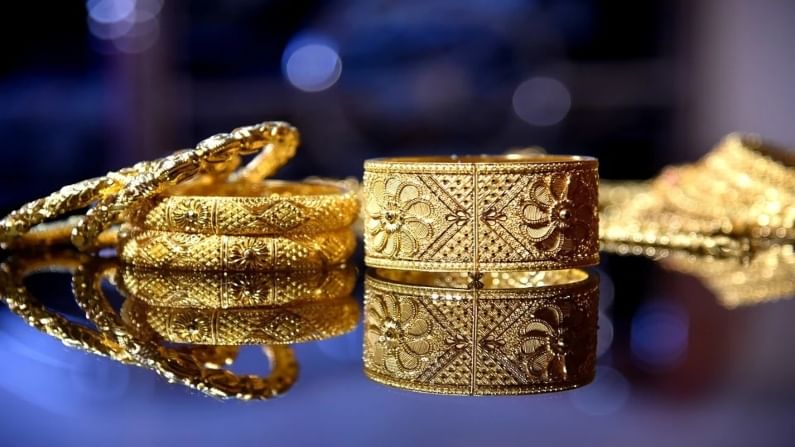Investing in gold this festive season? Know the associated costs
Gold investment: An individual has to pay 3% GST on the gold value if he or she wants to invest in physical gold.
- Ankur Sengupta
- Last Updated : October 18, 2021, 13:12 IST

The price of gold came down to nearly Rs 45,000/10 gm in October, 2021 marking a drop by almost Rs 11,000 since August 2020 when gold touched its record high of Rs 56,000/10 gm. This huge fluctuation of gold prices makes exposes the investor to big uncertainty. Those who are planning to invest in gold in this festive season might be thinking in which form of gold he/she should invest. Currently there are lots of options before an investor if he/she wishes to invest in gold – gold ETF, gold bond, digital gold and other forms. But there is a cost associated with each investment mode. What are the costs involved? Money9 gives you a brief guide.
Physical gold
You can invest in physical gold in the form of ornaments, bars or coins. You can invest as much as you wish but have to pay 3% GST on the value. If you settle for ornaments you would also have to pay for design and making charges which is about 10% of the price of the metal.
But if you want to sell ornaments, there is a straight discount of more than 10% on the value of the metal. You would not get any value for the design and making charges irrespective of how attractive the piece of jewellery is.
Gold bond
Reserve Bank of India issues sovereign gold bonds (SGB). One can buy it from any commercial bank, Stock Holding Corporation of India or from post offices. You can hold SGB for a maximum period of eight years.
It will give you a fixed return of 2.5% per annum. This is virtual buying or paper buying. You can’t get any physical gold after completion of the tenure. There is no extra cost or GST on it.
Gold ETF
You can invest in gold ETF (exchange traded fund) as per your capacity and there is no upper limit. But one has to spend an additional 0.003% of transaction charge over the total turnover value. Besides, 18% transaction charge is also levied on the customer.
Besides, SEBI also charges Rs 10 stamp duty up to per Rs 1 crore transactions. However, in ETF one can get input tax credit. If you sell in less than 36 months, you generate short-term capital gains. These gains are taxed at the income tax slab rates applicable to you.
On the other hand, If you sell after holding for 36 months or more, you generate long-term capital gains. These gains are taxed at 20% of the total amount along with any applicable cess.
Digital gold
One can buy digital gold through PhonePay, Paytm or Stock Holding Corporation of India or any top jewellery brands like Tanishq, Kalyan Jewellers and from multiple commercial banks. Otherwise, one can buy it through SafeGold or MMTC-PAMP platforms too.
One can buy digital gold with as low as Rs 10 or Rs 100 and can redeem it whenever one wants to. You can hold digital gold for a maximum period of five years. After that you have to convert it into coins or bars or sell it.
If you are on SafeGold platform, you can hold it for two years free of cost. After that for every 2 gm of gold you will be charged 0.05% of the total gold value per month.
Buying digital gold will also attract 3% GST over the cost of your gold, just like in case of buying physical gold.
Diwali
According to the market research firm YouGov’s Diwali Spending Index, almost three in 10 urban Indians are planning to spend on gold in the next three months.
As many as 58% of the respondents are planning to buy gold for personal or family use either in physical or digital form or through a gold scheme.
It also noted that the remaining 38% are likely to spend on gold for investing in the form of gold funds or in physical gold.
Also, 69% of gold buyers believed that Diwali and the festive season is the best time to buy gold in any form.
“Gold is the one of the best mediums of investment. Gold ETFs and bonds are two attractive ways of investing. In some states investing in gold ornaments is also a part of social custom. However, investing in gold ornaments also entails a risk of erosion of value if you want to sell it,” said Nilanjan Dey, director, Wishlist Capital Services.
Download Money9 App for the latest updates on Personal Finance.
Related
- पहली छमाही में रियल एस्टेट में संस्थागत निवेश 37% घटकर तीन अरब डॉलर रहने का अनुमान
- Budget’24: New LTCG rule to hit long-term property owners hard
- Looking to buy gold? Buy now before it’s too late!
- Budget 2024: What is NPS ‘Vatsalya’ scheme? How to apply & other benefits?
- Budget’ 24: Startup ecosystem all smiles with scrapping of angel tax
- Budget’24: New NPS scheme for minors launched, here’s how you can benefit

